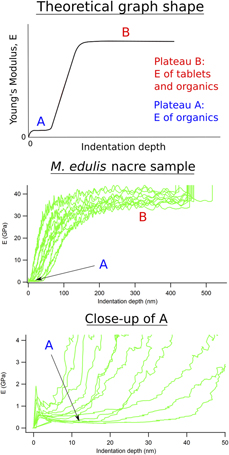Crossref Citations
This article has been cited by the following publications. This list is generated based on data provided by
Crossref.
Aylanc, Volkan
Ertosun, Seymanur
Akyuz, Lalehan
Koc Bilican, Behlul
Gokdag, Semih
Bilican, Ismail
Cakmak, Yavuz Selim
Yilmaz, Bahar Akyuz
and
Kaya, Murat
2020.
Natural β-chitin-protein complex film obtained from waste razor shells for transdermal capsaicin carrier.
International Journal of Biological Macromolecules,
Vol. 155,
Issue. ,
p.
508.
Harper, Elizabeth M.
and
Checa, Antonio G.
2020.
Tightly shut: flexible valve margins and microstructural asymmetry in pterioid bivalves.
Marine Biology,
Vol. 167,
Issue. 6,
Lagos, Nelson A.
Benítez, Samanta
Grenier, Cristian
Rodriguez-Navarro, Alejandro B.
García-Herrera, Claudio
Abarca-Ortega, Aldo
Vivanco, Juan F.
Benjumeda, Isabel
Vargas, Cristian A.
Duarte, Cristian
and
Lardies, Marco A.
2021.
Plasticity in organic composition maintains biomechanical performance in shells of juvenile scallops exposed to altered temperature and pH conditions.
Scientific Reports,
Vol. 11,
Issue. 1,
Babarro, Jose M.F.
Velo, Antón
Peteiro, Laura G.
Darriba, Susana
Broullon, Daniel
and
Pérez, Fiz F.
2023.
Taphonomy and dissolution rates of the razor clam Ensis magnus shells: Current status and projected acidification scenarios.
Estuarine, Coastal and Shelf Science,
Vol. 289,
Issue. ,
p.
108372.
Cho, Boongho
Jang, Sook-Jin
Hwang, Hee-seung
and
Kim, Taewon
2024.
Convergent Evolution of Armor: Thermal Resistance in Deep-Sea Hydrothermal Vent Crustaceans.
Biology,
Vol. 13,
Issue. 12,
p.
956.
Telesca, Luca
Linsley, Braddock K
Witek, Lukasz
and
Hönisch, Bärbel
2024.
Biomineralization and biomechanical trade-offs under heterogeneous environments in the eastern oyster Crassostrea virginica
.
Journal of Molluscan Studies,
Vol. 90,
Issue. 4,
Seo, Hyein
Cho, Boongho
Joo, Soobin
Ahn, In-Young
and
Kim, Taewon
2024.
Archival records of the Antarctic clam shells from Marian Cove, King George Island suggest a protective mechanism against ocean acidification.
Marine Pollution Bulletin,
Vol. 200,
Issue. ,
p.
116052.
Hoerl, S.
Micheletti, C.
Amini, S.
Griesshaber, E.
Hess, K.-U.
Checa, A.G.
Peharda, M.
and
Schmahl, W.W.
2025.
Correlation between nanomechanical properties and microstructural design concepts of bivalve muscle attachment sites.
Materials & Design,
Vol. 253,
Issue. ,
p.
113845.
